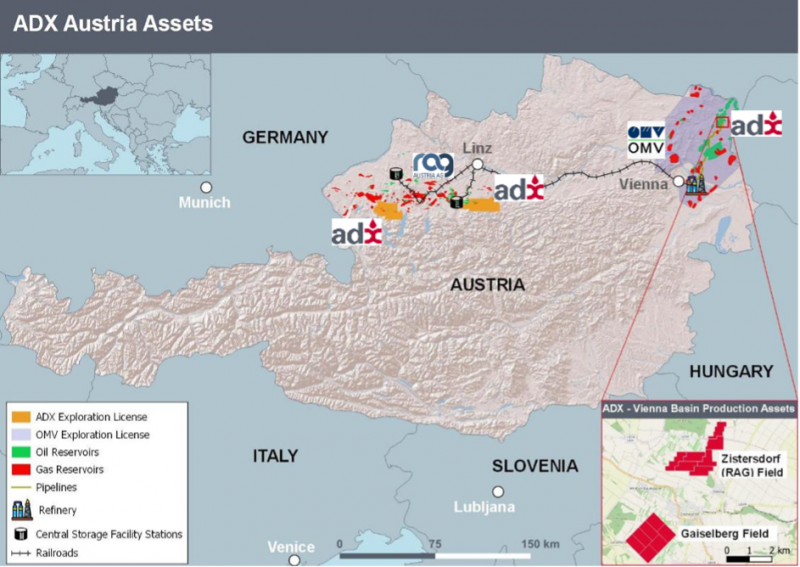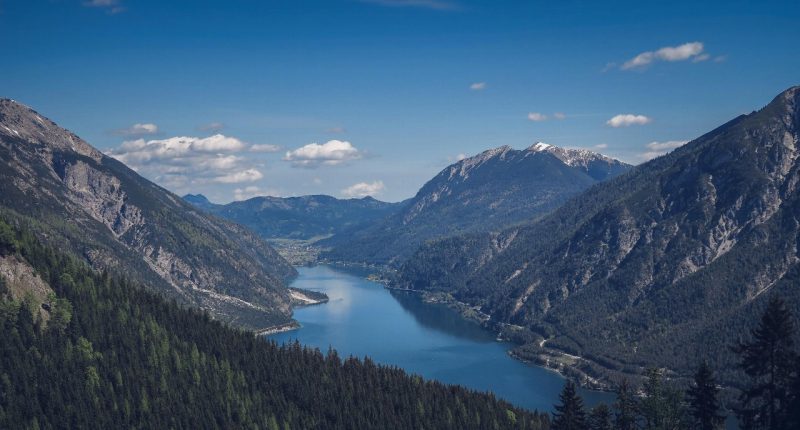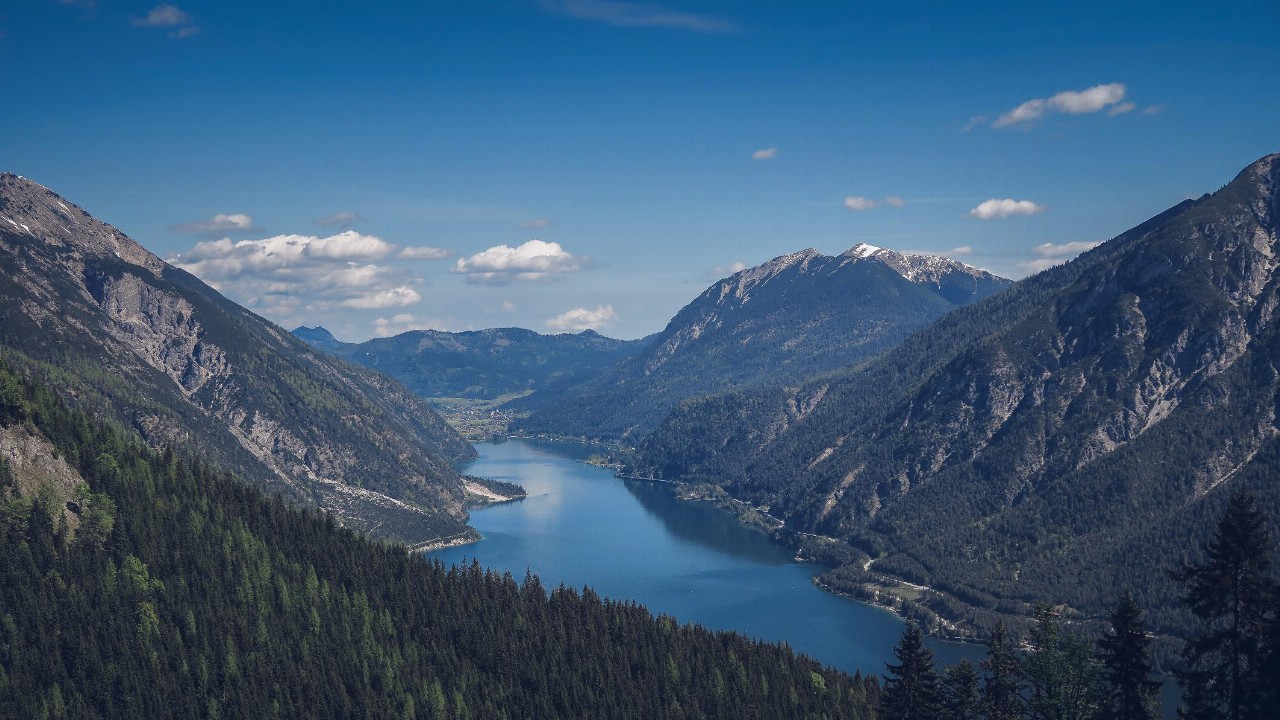- If asked to provide a list of countries known for their mining prospects, Austria may not be one of the first locations that comes to investor’s minds
- With an extensive and often lucrative resources history, it prompts the question as to what could be on the cards for Austria’s future in this space
- Two major corporations have long-held majority access to Austria’s untapped oil and gas resources, however, there are indications this could be about to change
- Australian-based explorer ADX Energy (ADX) has its sights set on the region after acquiring two oil and gas fields in the prospective Vienna Basin
- Just recently, ADX gained concession agreements for exploration, production and gas storage in Upper Austria
- The move makes ADX the sole exploration operator at the Austrian part of the Molasse oil and gas basin
- With the stage set and players in place, all that remains is to sit and listen to the next movement of the Austrian mining story
If asked to provide a list of countries known for their mining prospects, Austria may not be one of the first locations that comes to investor’s minds.
Perhaps better known for its rolling mountains, skiing, The Sound of Music and as the birthplace of Mozart, Austria, in fact, has a long and relatively unknown resource history.
It also appears to have a promising future, with an ASX-listed company taking a shine to the little-known, high-potential region, acquiring two oil and gas fields in one of the country’s most prospective basins.
The overture
Austria’s current resource production clocks in at just over one billion barrels of oil and three trillion cubic feet (TCF) of gas per year.
These results are not necessarily a first for Austria, which has a long-standing mining and political history dating back to the early twentieth century.
There was a point in Austria’s timeline when it sat as the third-largest oil producer in the world, amassing 2,077,000 tonnes of oil during 1909 under the Austrian-Hungary Monarchy.
Attempts were made to extend and build on these resource findings after the first world war, however insufficient geological knowledge and post-war economic woes made it difficult for operations to hit any high notes.
Oil and gas tenements in Austria were controlled via the interests of other countries, first by Germany and then by the USSR, before eventually being fully returned back into the hands of Austria in around 1955.
Like many of its western counterparts, Austria’s drilling and geophysical equipment have progressed a long way since the ’50s, allowing it to continue its pursuit for mineral riches.
The end result is a country with a lucrative gas pipeline network, situated within a major economy and a plethora of potential untapped resource.
The key performers
Only two companies have officially explored and produced in Austria, namely, RAG Austria AG and OMV Group.
Both of their stories also go way back, emerging in the wake of the country’s mission to develop its own oil, gas, and independence.
Founded in 1932, RAG Austria has something of a right to coin itself as the oldest company in Austria in the oil exploration and production field, making its first oil discovery in 1937 and beginning commercial gas production in 1963.
RAG is a private company, owned by Shell and RAG-Beteiligungs.
OMV’s story began in 1956, emerging after negotiations on the Austria state treaty, when the country was granted its own independence.
The company was appointed to manage the logistical transition of oil and gas properties in around 1955 to meet western operational standards of the time as it became further aligned with western work approaches.
It has since gone on to become a multinational oil and gas giant, ranked by Forbes as the 441st largest company in the world for 2020 and is currently listed on the Vienna Stock Exchange.
For a country with such untapped exploration opportunities, it would be a fair assumption there’s more than just two companies looking to chime in.
While the Vienna Basin bears striking similarities to gas prospects on our own home soil there’s one ASX player who’s set its heart on exploration in the central European country.
Centre-stage for ADX Energy?
ADX Energy (ADX), the ASX-lister with a particular focus on the European oil and gas exploration, is in the process of making some big plays in Austria.
Back in 2019, the disruptor made its first advances into the prospective Vienna Basin, purchasing the Gaiselberg and Zistersdorf onshore oil and gas fields.
It officially took the number of oil and gas developers in Austria to three, a transaction ADX Energy’s Executive Chairman described as “transformational” and a significant milestone for the explorer.
While COVID-19 has made it difficult to even enter and exit a country, let alone complete exploration activities, ADX appears to have capitalised on the downtime, lining up some compelling developments.
Taking advantage of the locality of its recently Gaiselberg and Zistersdorf acquisitions, ADX has flagged plans to potentially utilise already depleted reservoirs at its for hydrogen storage.
The potential of the fields is owed to its close proximity to major renewable electricity sources that could be used for renewable hydrogen or, green hydrogen production.
In most recent news, ADX has been granted concession agreements for exploration, production and gas storage in Upper Austria, making it the sole exploration operator in the Austrian part of the prolific Molasse oil and gas basin.
The explorer says drilling can commence within a short time and hydrocarbons can be developed quickly, cost-effectively and with a high degree of commercial certainty.

Source: ADX Energy
In terms of financial matters, ADX has assumed a hedging position against the Brent crude oil price, securing in a bid to ensure a more certain cash flow during a period of expected ongoing volatility in oil prices, to keep operation costs ticking over.
As per its most recent quarterly financial statement, ADX has just over $2.8 million in available funding, enough to sustain operations in 2021’s first half.
With the stage set and players in place, all that remains is to sit and listen to the next movement of the Austrian mining story.








